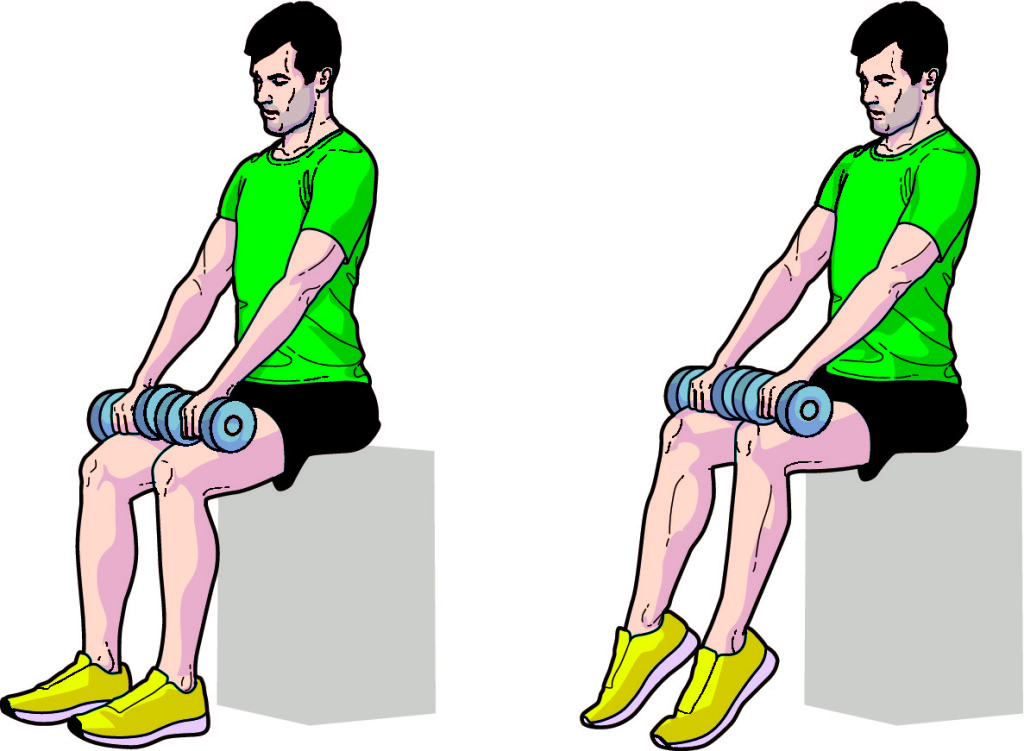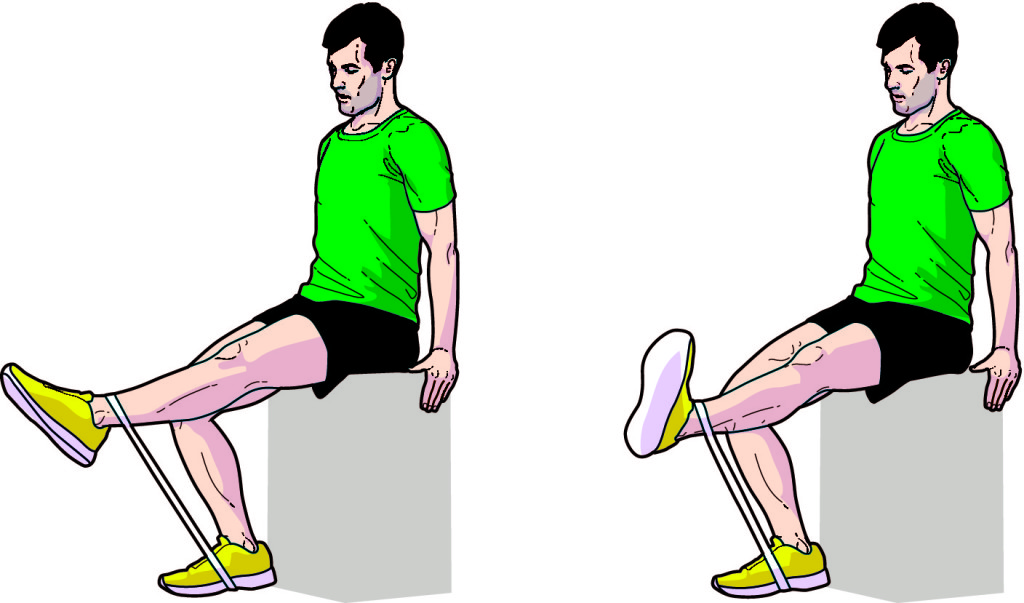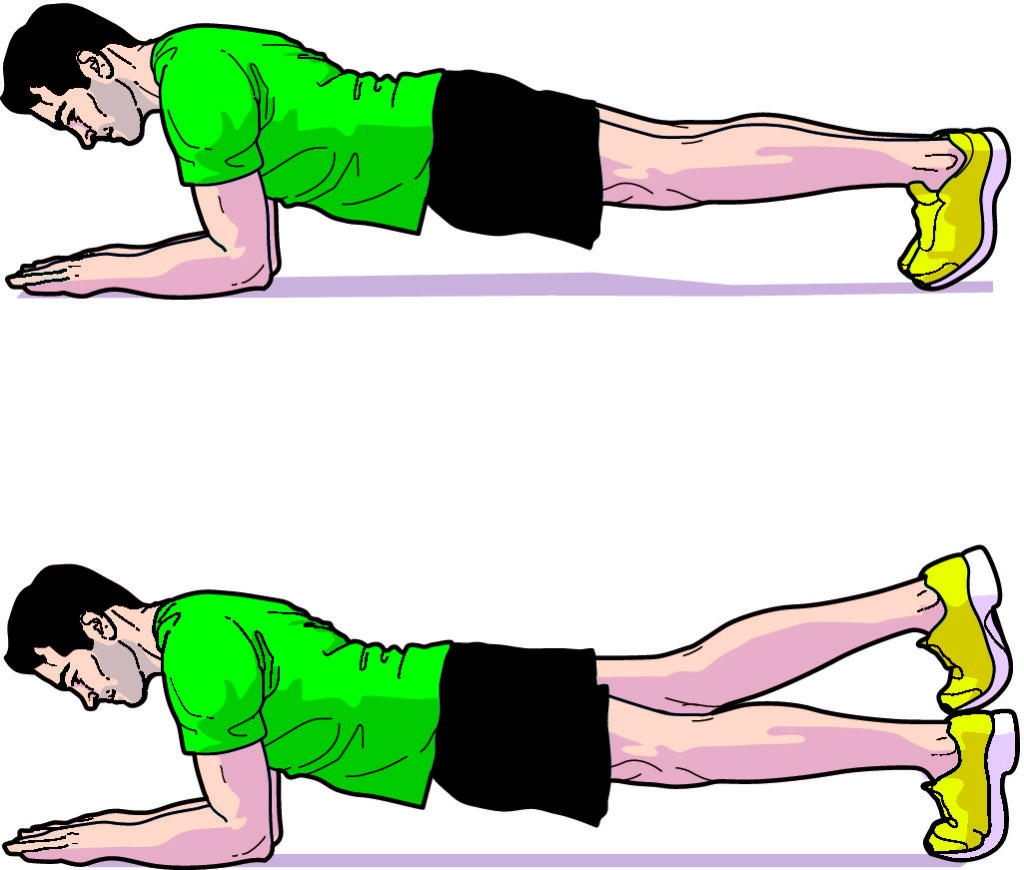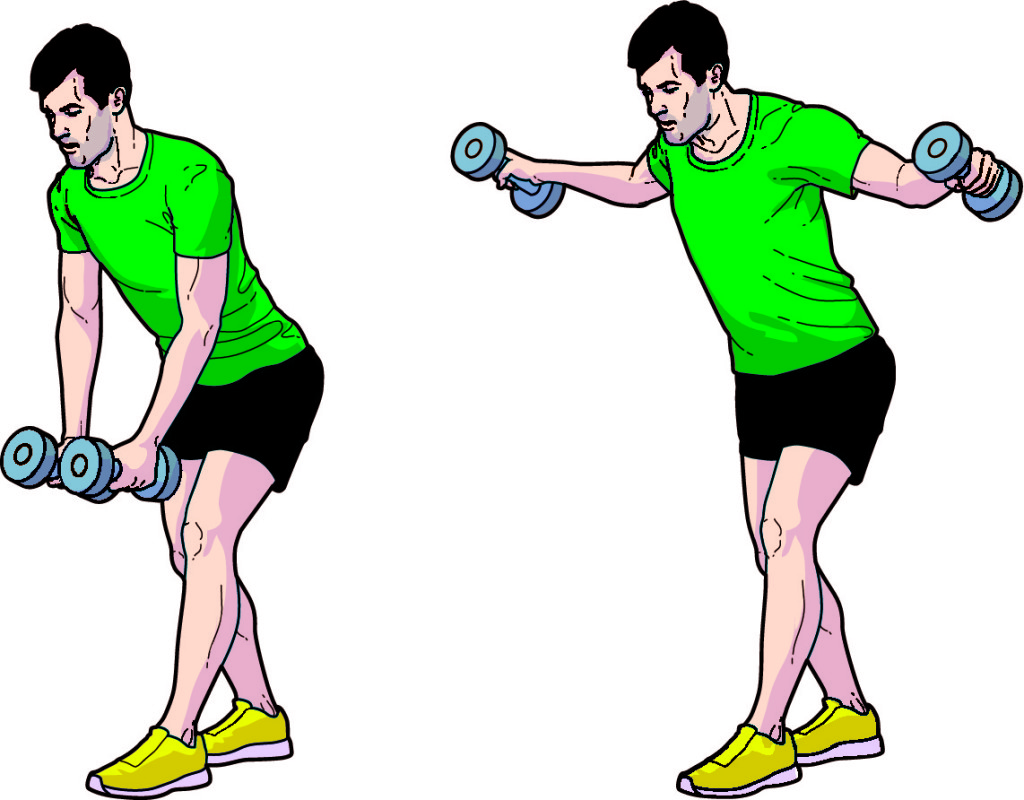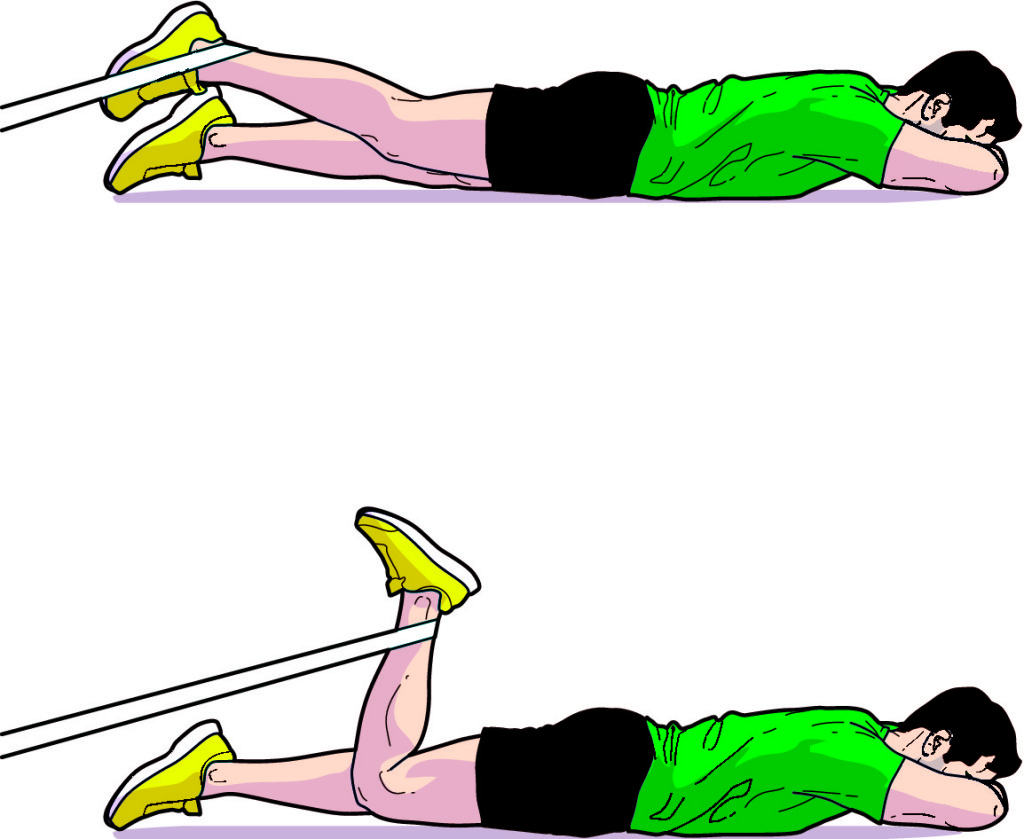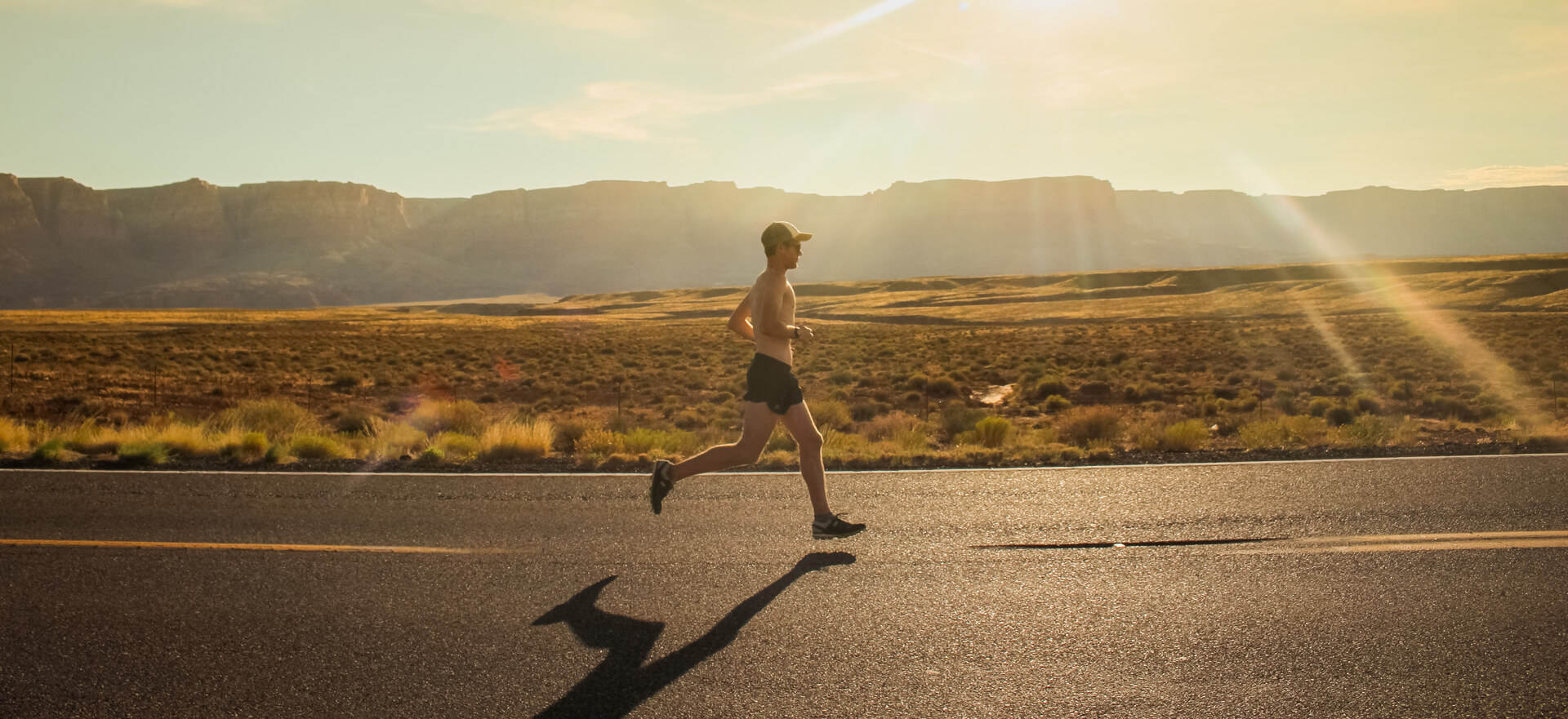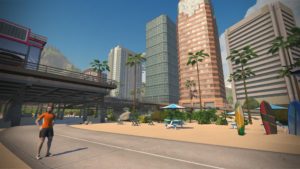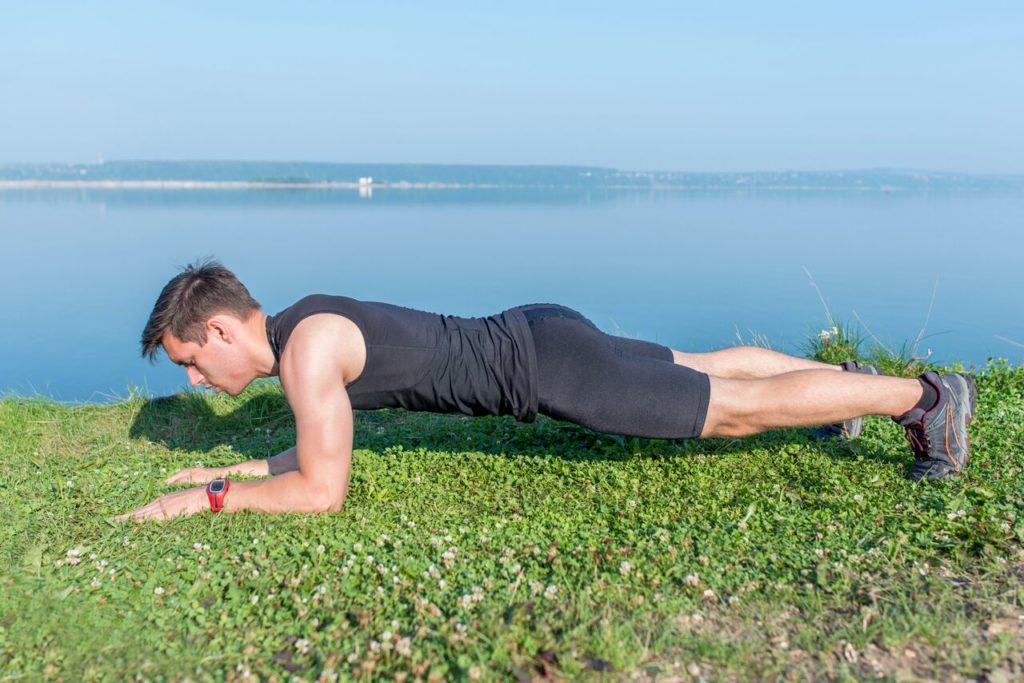
Sets, reps and frequency
Perform three sets of 15 to 20 repetitions three times per week.
Seated Calf Raises
Muscles: calves (gastrocnemius, soleus)
Why do it? Going uphill requires a lot of strength from your lower legs. By moving your feet into different positions, you ensure that all the muscles are strong. This will support your running and reduce fatigue.
Technique:
- Sit on a chair or bench with your feet hip-width apart
- Hold a weight in each hand and rest the weights on your knees
- Keep your toes pointing forward and raise your heels off the floor
- Slowly lower until your heels touch the floor
- Complete one set
- For your second set, turn your toes in and repeat the move
- For the third set, turn your toes out and repeat the move
Watch point: Make sure that you perform a full range of motion to target all the different muscle fibres.
Resistance band leg extension
Muscles: front thigh (quadriceps)
Why do it? Strengthening your thighs will make running uphill a lot easier.
Technique:
- Tie your resistance band in a loop
- Put your left foot inside the loop with the band around your ankle
- Secure the other end of the resistance band underneath your right foot
- Straighten your left leg with your toes pointing straight forward
- Slowly lower your leg in a controlled motion
- Complete one set
- For your second set, turn your toes in and repeat the move
- For the third set, turn your toes out and repeat the move
Watch point: Don’t lock your knee at the top position. Ensure that you have a straight line in between your foot, knee, hips and shoulders.
Plank with a leg lift
Muscles: core muscles (transversus abdominus)
Why do it? This is a great exercise to teach you how to contract your core muscles while moving your legs.
Technique:
- Lie on on your stomach
- Place your elbows directly underneath your shoulders
- Lift your hips off the floor in a plank position
- Ensure that you keep a straight line between your shoulders, hips and feet
- Lift your right leg off the floor
- Ensure that you keep your hips level to the floor
- Put your right foot down and lift the left leg up
- Alternate between right and left
Watch point: If you feel pain in your lower back lift your hips slightly higher.
Bent-over fly
Muscles: rear shoulders and upper back (rear deltoids, rhomboids)
Why do it? A good strong posture will prevent slowing when you run uphill or when you get tired.
Technique:
- Hold a weight in each hand and keep your elbows slightly bent
- Stand with your right leg in front of your left
- Lean slightly forward
- Lift your arms sideways until your hands are level with your shoulders
- Return to the starting position in a controlled range of motion
Watch point: Don’t round your upper back when you bend over.
Side lunge
Muscles: inner and outer thighs (adductors and abductors)
Why do it? Strengthening the muscles that help with lateral stability will support your primary muscle groups (front and back thighs).
Technique:
- Stand with your feet together
- Step sideways with your right leg
- Bend your right knee while keeping your left leg straight
- Complete one set on the right before changing over to the left
Watch point: Keep your back straight and your core muscles tight.
Resistance band lying leg curl
Muscles: rear thighs (hamstrings)
Why do it? Running trails requires a lot of muscle strength and endurance. Strong hamstrings will ensure that you maintain a good running stride.
Technique:
- Tie your resistance band in a loop around something secure
- Lie on your stomach
- Hook your right leg into the loop
- Ensure that you have some tension on the resistance band
- Bend your leg bringing your heel towards your bum
- Slowly lower with control
- Complete one set before changing over to the left
Watch point: Always keep tension on the resistance band.

